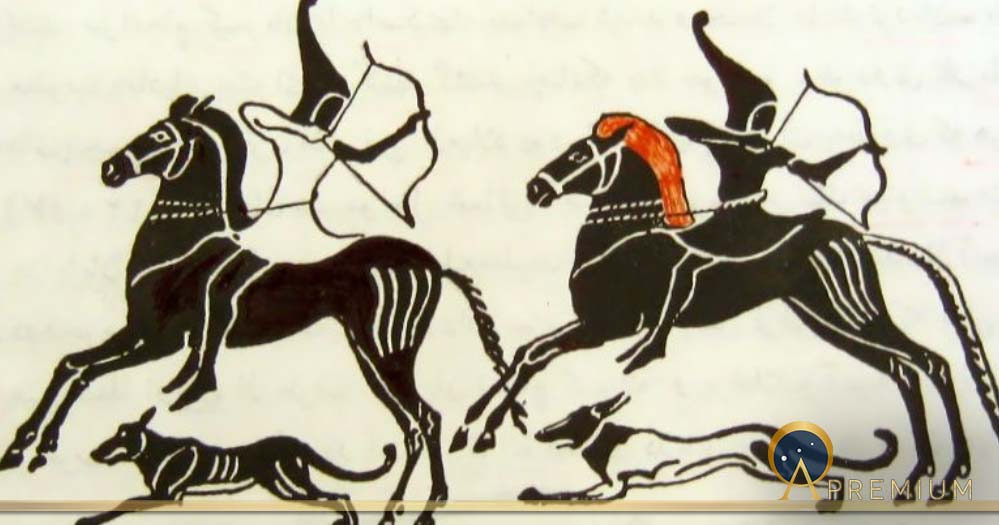The Enigmatic Cimmerians Crisscrossing The Caspian And Caucasian Steppes
The Cimmerians remain one of the most mysterious and obscure peoples of the ancient world. They make their debut in the Odyssey, written by Homer, the great Greek bard, in the eight century BC. To this day scholars have widely different opinions about them and their origins. The scholar, Arcadia Xenia Kocybala, who wrote his doctoral dissertation on the early Greek colonisation of the Black Sea Region, says of them: “ The Cimmerians are perhaps the most elusive of the inhabitants of the north Pontic steppe.” Homer tells how the great Greek war hero, Odysseus, King of Ithaca, and his crew, sailed in search of the “Halls of Hades”. This strange place could be reached by crossing the “River of Ocean”, here referring to the Black Sea: “ So she [the ship] reached the farthest parts of the deep-flowing River of Ocean where the Cimmerians live, wrapped in mist and fog. The bright sun cannot look down on them with his rays, either when he climbs the starry heavens or when he turns back from heaven to earth again. Dreadful night spreads her mantle over that unhappy people.” ( The Odyssey)

The Cimmerian migrations across West Asia, Assyria and into Europe (CC BY-SA 3.0)
Locating Cimmeria
The place where Odysseus and his adventurers landed was on the eastern shores of the Kerch Peninsula, where Herodotus later locates the homeland of the Cimmerians. In his Histories, Herodotus calls the area Cimmeria and mentions place names from that area, like Cimmerian walls, Cimmerian ferry and Cimmerian Bosporus. Except for some graves ascribed to the Cimmerians near Tyras and in the Danube Delta in tradition and on the ground, it seems that these people had a particularly strong connection with the Kerch Peninsula (modern Ukraine). The Cimmerian association with the area around the ancient city of Tyras is also very interesting. This city was located near the mouth of the Dniester River on the northwestern shores of the Black Sea. According to Herodotus, the Dniester River was once called Tyras, after a people called Tyritai living in that area.
Interestingly, several double axes dating back to the Bronze Age, that is, from the Mycenaean Period (c. 1700 to 1180 BC), had been discovered in the Dnepr-Bug area to the north of the Tyras. The Dniester River was situated on the amber route to the Baltic Sea and used since at least Mycenaean times. During the seventh and sixth centuries BC, handmade pottery of Geto-Thracian provenance is attested to here, which then disappears, probably due to the increasing and strengthening Scythian presence in the area.
Like this Preview and want to read on? You can! JOIN US THERE ( with easy, instant access ) and see what you’re missing!! All Premium articles are available in full, with immediate access.
For the price of a cup of coffee, you get this and all the other great benefits at Ancient Origins Premium. And - each time you support AO Premium, you support independent thought and writing.
Dr Willem McLoud is an independent South African scholar whose main interests are ancient Middle Eastern studies, Kantian philosophy and philosophy of science. Willem’s main areas of study regarding the ancient Middle East are the Sumerian, Akkadian and early Egyptian civilizations, with special focus on the Uruk and Akkadian Periods in Mesopotamian history as well as the Old Kingdom Period in Egyptian history. He is the author of The Nephilim: Kings of an Epic Age: Secrets and Enigmas of the Sumerians and Akkadians and The Nephilim: An Unholy Brood: Secrets and Enigmas of an Ancient Mediterranean Race
Top Image: Reproduction of a depiction of Cimmerian mounted archers from a Greek vase. (Shams bahari /CC BY-SA 3.0)
By: Dr Willem McLoud
















